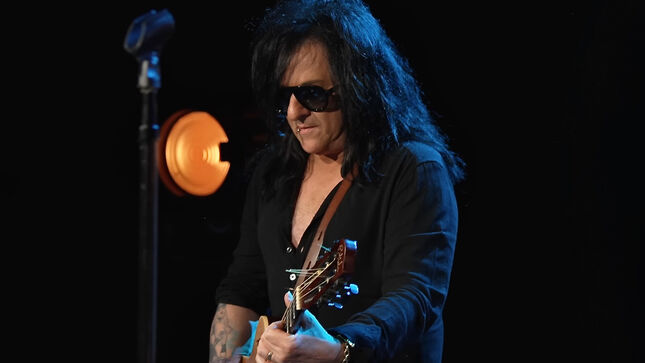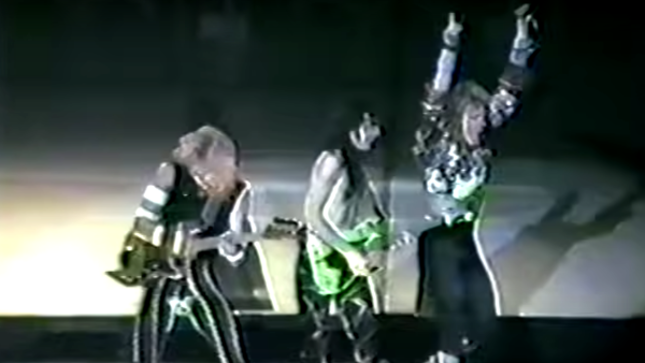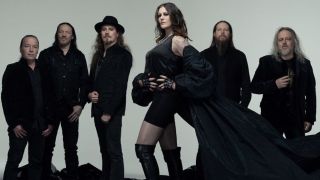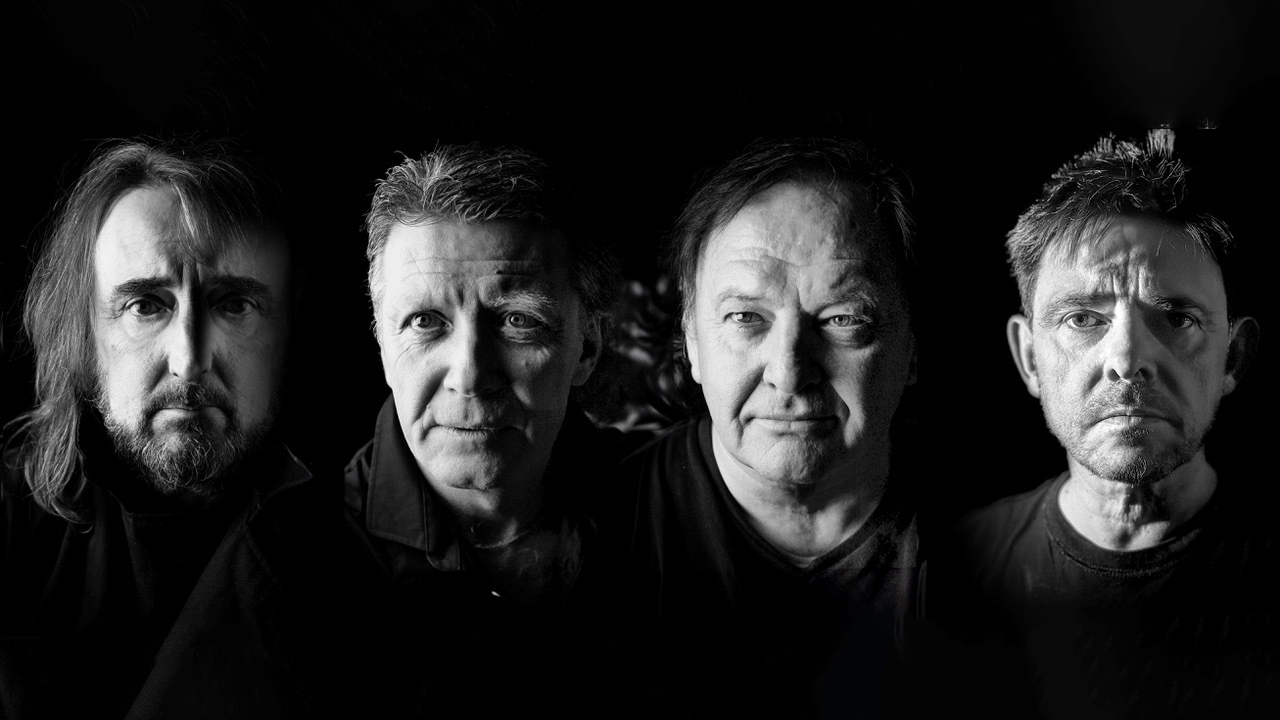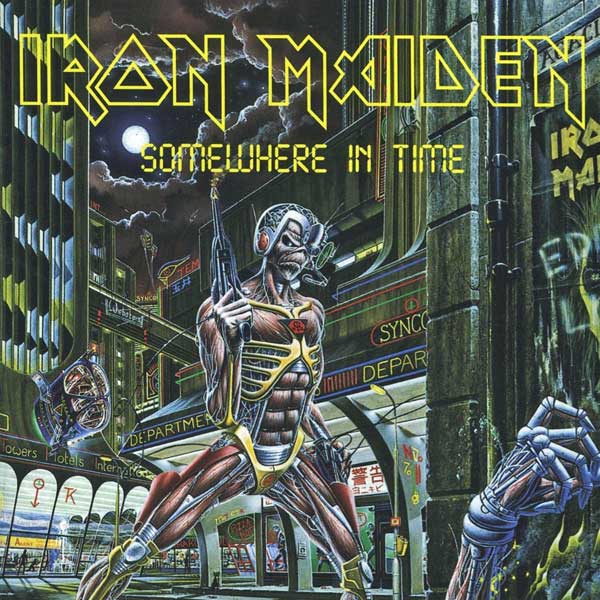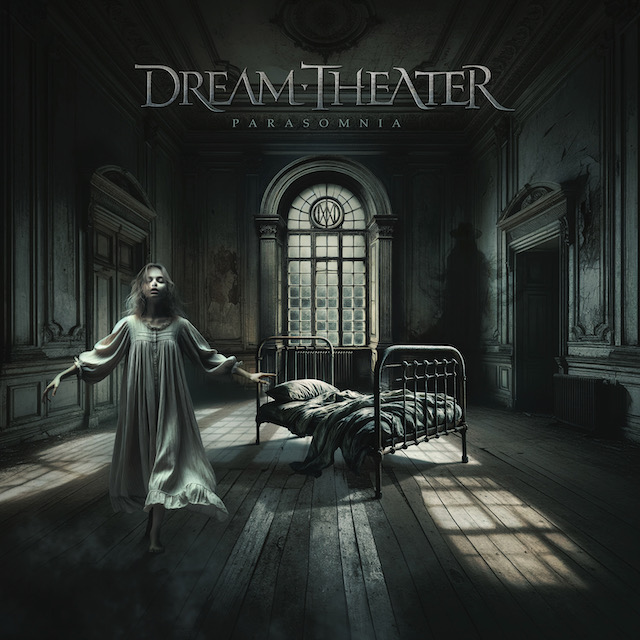
Feature Photo: Northfoto / Shutterstock.com
Houses aren’t just where we live—they’re where stories unfold, where memories are built, and where emotions linger long after the door has closed. In rock and roll, the idea of a “house” has been a canvas for countless songs, capturing everything from familial warmth to unrelenting heartbreak. This list of songs with “house” in the title showcases the eclectic ways musicians have drawn from this simple yet resonant concept to create unforgettable tracks.
From the haunting allure of The Animals’ “The House of the Rising Sun” to the nostalgic charm of Crosby, Stills, Nash & Young’s “Our House,” each artist on this list has used “house” to explore themes that hit close to home. Madness captured the chaos and warmth of family life in “Our House,” while Talking Heads took a surreal approach with “Burning Down the House,” blending enigmatic lyrics with driving energy. Frank Zappa turned the “Little House I Used to Live In” into a sprawling masterpiece, while Faster Pussycat delivered raw vulnerability in “House of Pain.”
# 10 – Our House / House Of Fun – Madness
The beauty of pop music is its ability to capture snapshots of life, and “Our House” by Madness achieves this with remarkable charm. Released in 1982 as part of the album The Rise & Fall, this song reflects the everyday dynamics of family life with both warmth and wit. Written by the band members Chris Foreman and Carl Smyth, the track was produced by Clive Langer and Alan Winstanley, who helped refine Madness’ signature blend of ska and pop. Recorded at AIR Studios in London, “Our House” showcases the band’s knack for blending buoyant melodies with reflective storytelling, a combination that earned it widespread acclaim. Chart-wise, the song achieved significant success, reaching number 5 on the UK Singles Chart and climbing to number 7 on the Billboard Hot 100 in the United States—a rare feat for a ska-pop song of its era.
The lyrics paint a vivid picture of domestic life in a working-class British family, with lines like “Father wears his Sunday best / Mother’s tired, she needs a rest” resonating with audiences through their relatability. This contrast between the mundane and the affectionate creates a timeless quality that sets “Our House” apart. The accompanying music video, filmed in a quintessential British neighborhood, further emphasizes the song’s nostalgic and lighthearted spirit, offering visual anecdotes that bring the lyrics to life. Compared to other songs on this list, “Our House” stands out for its ability to find beauty in the ordinary, making it a poignant celebration of home.
On the flip side of this tie, “House of Fun” takes a completely different angle on the theme of houses. Released as a stand-alone single in 1982, “House of Fun” is an energetic and quirky tale about a boy’s awkward attempt to buy condoms, humorously masked as a visit to a “funhouse.” Also produced by Clive Langer and Alan Winstanley, the track features Madness’ signature lively instrumentation, with driving saxophones and playful piano lines. The song topped the UK Singles Chart, becoming the band’s only number 1 hit in their home country.
Lyrically, “House of Fun” is a humorous coming-of-age story brimming with double entendres and clever wordplay. Its spirited delivery and frenetic pace highlight Madness’ theatrical approach to storytelling, a hallmark that distinguishes them from their peers. Together, “Our House” and “House of Fun” showcase the versatility of Madness, from heartwarming reflections on family life to witty explorations of youthful misadventures. Positioned as the opening entry of this list, these songs serve as a dynamic introduction, demonstrating how the concept of “house” can be both deeply personal and riotously fun.
Read More: Top 10 Madness Songs
# 9 – Pink Houses – John Mellencamp
# 8 – White House – Ian Hunter
“White House,” a track from Ian Hunter’s 2016 album Fingers Crossed, showcases the legendary singer-songwriter’s ability to craft vivid, wry narratives grounded in relatable experiences. Accompanied by the Rant Band, Hunter delivers a playful yet reflective exploration of escape and simplicity. The album, recorded with his longtime collaborators, captures a raw, organic sound that complements the wit and charm of the song’s lyrics.
“White House” centers around the idea of leaving the hustle and bustle of city life for the tranquility of the countryside. Hunter paints a lively picture of this rural paradise, complete with birds, bees, and even a touch of humor about the downsides of nature, such as allergies and pesky fleas. With its folksy charm and Hunter’s seasoned vocal delivery, the song transforms a seemingly mundane topic into a whimsical meditation on finding peace. The repeated refrain, “You are the only one for me,” underscores a deeper emotional resonance, grounding the narrative in a love story that transcends its rural setting.
Musically, “White House” leans on Hunter’s signature blend of rock and folk influences, with a touch of country flair. The instrumentation, marked by warm acoustic guitars and a steady rhythm, mirrors the song’s themes of stability and simplicity. The clever lyricism, such as references to “eager beavers” and a tongue-in-cheek wish for a gun to handle multiplying rabbits, highlights Hunter’s knack for humor and vivid imagery. Positioned within this list, “White House” brings a refreshing, lighthearted perspective, offering a counterpoint to more somber explorations of “house” themes while reaffirming Ian Hunter’s enduring creativity and relevance in modern music.
Read More: Top 10 Ian Hunter Songs
# 7 – Little House I Used to Live In – Frank Zappa
“Little House I Used to Live In” is a cornerstone of Burnt Weeny Sandwich, a 1970 release by Frank Zappa and the Mothers of Invention. This album is a masterclass in Zappa’s genius for blending rock, classical, jazz, and avant-garde influences into a cohesive whole. The track, an instrumental opus clocking in at over eighteen minutes, showcases the extraordinary talents of Zappa and his ensemble while exemplifying his innovative approach to composition and improvisation.
The album was recorded in various sessions from 1967 to 1969, featuring a lineup of highly skilled musicians. The Mothers of Invention included Ian Underwood on keyboards and woodwinds, Don “Sugarcane” Harris on violin, and the versatile percussion work of Art Tripp III. Roy Estrada contributed bass and backing vocals, while Jimmy Carl Black and Billy Mundi handled drums on various tracks. The album also features Zappa’s unmistakable guitar work, which anchors “Little House I Used to Live In” with his signature combination of technical mastery and emotional depth. The piece highlights Harris’s virtuosic violin playing, which brings a fiery energy to the extended improvisations.
Burnt Weeny Sandwich is notable for its structure, with “Little House I Used to Live In” serving as its centerpiece. The track begins with a complex piano introduction by Underwood, transitioning into an intricate arrangement that seamlessly blends composed sections and improvisation. Zappa’s ability to orchestrate dynamic shifts and interplay between the musicians is on full display, demonstrating his brilliance as a bandleader and composer. The piece’s length and ambition cement it as one of Zappa’s most accomplished works, reflecting his commitment to pushing the boundaries of rock and blending it with high art.
Critically, Burnt Weeny Sandwich is celebrated for its experimental nature and technical prowess, with “Little House I Used to Live In” often singled out as a standout achievement. It embodies Zappa’s ethos of challenging musical conventions and showcases the exceptional musicianship of the Mothers of Invention. This track is not only a testament to Zappa’s creative vision but also a compelling demonstration of the profound synergy between the band members. Through its complexity and innovation, “Little House I Used to Live In” remains a defining piece in Frank Zappa’s catalog and a landmark in experimental rock.
Read More: Frank Zappa’s Greatest Studio Guitar Solos
# 6 – House In The Country – Blood Sweat & Tears
“House in the Country” is a track from Child Is Father to the Man, the 1968 debut album by Blood, Sweat & Tears. Written by the group’s founder and primary songwriter, Al Kooper, the song reflects his innovative blending of rock, jazz, and classical elements, which defined the band’s early sound. This album laid the groundwork for the jazz-rock movement and is widely regarded as one of the most influential records of the era.
The track features the original lineup of Blood, Sweat & Tears, which included Al Kooper on keyboards and vocals, Steve Katz on guitar, Jim Fielder on bass, Bobby Colomby on drums, Randy Brecker and Jerry Weiss on trumpets, Fred Lipsius on alto saxophone, and Dick Halligan on trombone. This ensemble brought an eclectic mix of musical backgrounds, resulting in a sound that was both adventurous and cohesive. The album was produced by John Simon, who played a crucial role in capturing the experimental and orchestral feel of the band’s arrangements.
“House in the Country” is a satirical critique of privilege and self-righteousness, delivered with Kooper’s biting wit and dynamic vocal performance. Musically, the song incorporates driving rhythms and bold brass sections, which were hallmarks of the band’s sound. The instrumental interplay underscores the track’s biting lyrics, creating a sharp and engaging commentary on societal divides. Kooper’s use of the band’s horn section as a melodic and rhythmic force was groundbreaking at the time, adding depth and sophistication to the track.
Child Is Father to the Man is celebrated as a pivotal release in the history of rock music. While subsequent iterations of Blood, Sweat & Tears leaned more heavily into commercial territory, this debut remains a bold and uncompromising artistic statement. “House in the Country” stands as an example of the album’s balance between sharp social critique and innovative musicianship, ensuring its enduring legacy as a cornerstone of late-1960s rock experimentation.
Read More: Top 10 Blood, Sweat & Tears Songs
# 5 – Our House – Crosby, Stills, Nash & Young
“Our House” is one of Crosby, Stills, Nash & Young’s most cherished tracks, featured on their seminal 1970 album Déjà Vu. Written by Graham Nash, the song captures a moment of domestic bliss inspired by his relationship with Joni Mitchell. According to Nash, the lyrics were born out of a simple yet meaningful experience when he and Mitchell bought a vase of flowers together, leading to the warm reflection of home life expressed in the song.
Recorded at Wally Heider Studios in San Francisco and Los Angeles, Déjà Vu showcases the collective talents of David Crosby, Stephen Stills, Graham Nash, and Neil Young. The track prominently features Nash’s gentle vocal lead, supported by rich harmonies from the group, a hallmark of their sound. The instrumental arrangement, including a delicate piano line played by Nash and acoustic guitars, creates a soothing and intimate atmosphere that aligns perfectly with the song’s theme.
The song was produced by the band along with Bill Halverson, who helped capture the intricacies of their vocal harmonies and instrumental subtleties. The album, Déjà Vu, was a massive success, reaching number one on the Billboard 200 and earning multi-platinum certification. While “Our House” wasn’t released as a single, it remains one of the most beloved tracks in their catalog, often cited as an anthem of idyllic love and domestic tranquility.
Lyrically, “Our House” paints a vivid picture of contentment, with lines like “a very, very, very fine house” becoming synonymous with the peace and simplicity of a shared home. The song’s timeless appeal lies in its universality, resonating with anyone who cherishes the comfort of a loving, shared space. In the context of Déjà Vu, “Our House” provides a moment of warmth and reflection, balancing the album’s broader explorations of societal and personal themes.
Read More: Top 10 Crosby, Stills, Nash & Young Songs
# 4 – House Of Pain – Faster Pussycat
# 3 – This House Is Empty Now – Burt Bacharach & Elvis Costello
“This House Is Empty Now” is simply a mesmerizing song from Painted from Memory, the 1998 collaboration between Burt Bacharach and Elvis Costello, it is an emotionally devastating ballad that epitomizes the album’s sophisticated exploration of heartbreak and longing. Painted from Memory marked a remarkable partnership between Bacharach, a master of timeless pop melodies, and Costello, known for his incisive lyrical wit. The album, produced by Bacharach, Costello, and Patrick Leonard, blends orchestral arrangements with Costello’s evocative vocals, offering a collection of songs that feel both cinematic and deeply personal.
Recorded in Los Angeles, Painted from Memory featured some of the finest session musicians of the era, including drummer Jim Keltner and bassist David Stone. “This House Is Empty Now” stands out for its haunting arrangement, which weaves together a delicate piano motif, lush strings, and subdued brass that create a sense of emptiness and despair. Bacharach’s characteristic use of complex chord progressions and unusual time signatures enhances the song’s emotional weight, while Costello’s soulful, aching delivery breathes life into the poignant lyrics.
Lyrically, “This House Is Empty Now” portrays the desolation of a love that has withered, leaving behind only memories and regret. Lines like “These rooms play tricks upon you / Remember when they were always filled with laughter?” capture the tension between the nostalgia for happier times and the harsh reality of a relationship’s end. The metaphor of an empty house underscores the song’s theme of abandonment, with Costello’s voice conveying both vulnerability and resignation. Bacharach’s melodic genius amplifies this sorrow, particularly in the swelling crescendos that mirror the lyrical heartbreak.
“This House Is Empty Now” is a testament to the power of collaboration between two legendary artists. It stands as one of the most affecting tracks on Painted from Memory, cementing the album as a landmark in the careers of both Bacharach and Costello. Its intricate arrangement, deeply introspective lyrics, and stunning vocal performance make it a fitting inclusion in this list of songs with “house” in the title, demonstrating how physical spaces can become vessels for emotional narratives.
Read More: Top 20 Burt Bacharach Songs
Read More: 25 Essential Elvis Costello Songs And Fan Favorites
# 2 – Burning Down The House – Talking Heads
“Burning Down the House,” released as the lead single from Talking Heads’ fifth studio album, Speaking in Tongues (1983), marked a pivotal moment for the band, propelling them into mainstream success. Written collaboratively by the band members—David Byrne, Chris Frantz, Tina Weymouth, and Jerry Harrison—the song stands as one of their most enduring and recognizable tracks. Its infectious energy and enigmatic lyrics highlight the band’s unique approach to blending new wave, funk, and art rock.
The song originated from a jam session inspired by the crowd chant “Burn down the house!” during a Parliament-Funkadelic concert attended by Frantz. The track’s creation showcases the band’s experimental spirit, with Frantz’s explosive drumbeat and Weymouth’s driving bassline forming the backbone of the song. Harrison added textural depth with layered keyboards and rhythm guitar, while Byrne’s unconventional vocal delivery and cryptic lyrics added a surreal edge. Producer-engineer Mark Weiss helped craft the final mix, balancing the band’s intricate layers to create a polished yet vibrant sound.
“Burning Down the House” became the band’s highest-charting single in the United States, reaching number nine on the Billboard Hot 100. The accompanying music video, directed by David Byrne and co-conceived by the band, utilized a playful mix of performance footage and surreal imagery, capturing the eccentric energy of the track. This visual innovation helped the song gain heavy rotation on MTV, further cementing its cultural impact.
Lyrically, the song resists straightforward interpretation, with Byrne’s fragmented phrases leaving room for various meanings. Lines like “Watch out, you might get what you’re after” evoke a sense of urgency and unpredictability, while the titular refrain serves as a cathartic release. The song’s dynamic structure and relentless rhythm mirror its themes of chaos and reinvention, making it a fitting addition to this list of tracks with “house” in the title. “Burning Down the House” remains a landmark in Talking Heads’ career, emblematic of their ability to fuse complex artistry with broad appeal.
Read More: Top 10 Talking Heads Songs
# 1 – House Of The Rising Son – The Animals
The Animals’ version of “The House of the Rising Sun,” released in 1964, remains one of the most iconic renditions of this traditional folk song. The track was recorded in one take at De Lane Lea Studios in London and produced by Mickie Most, who played a pivotal role in capturing the raw, brooding energy of the band. With its haunting organ riff, moody guitar lines, and Eric Burdon’s powerful, anguished vocals, this version transformed the song from its folk roots into a monumental rock ballad.
The song tells the tale of despair and regret, set against the backdrop of a house in New Orleans. The precise origins of the song are unknown, but its narrative of a life led astray resonates universally. The Animals’ arrangement featured Alan Price’s unforgettable Vox Continental organ solo, Hilton Valentine’s arpeggiated guitar intro, and Chas Chandler’s bassline, all contributing to a dark, atmospheric sound that distinguished their version from earlier folk interpretations. The lineup also included drummer John Steel, whose steady rhythm added to the song’s ominous intensity.
Released as a single, “The House of the Rising Sun” became a commercial and critical triumph, reaching number one on the charts in both the United Kingdom and the United States. This success marked The Animals as one of the leading bands of the British Invasion. The track’s impact was so profound that Bob Dylan, who had previously recorded his version of the song in 1962, switched to playing electric guitar after being inspired by The Animals’ electrified interpretation.
Lyrically, the song conveys a deep sense of sorrow, with lines like “It’s been the ruin of many a poor boy” serving as a timeless warning against a life of vice and regret. The Animals’ rendition amplifies this sentiment, turning it into an anthem of soulful anguish. As the most famous version of “The House of the Rising Sun,” this track not only solidified The Animals’ place in rock history but also set a benchmark for how traditional songs could be reimagined in contemporary music.
Read More: Top 10 Songs From The Animals
Read More: Artists’ Interviews Directory At ClassicRockHistory.com
Read More: Classic Rock Bands List And Directory

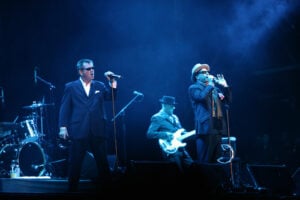

![Burnt Weeny Sandwich [LP]](https://m.media-amazon.com/images/I/61MTCzBrGAL._SL500_.jpg)





